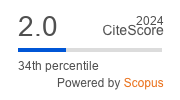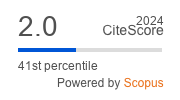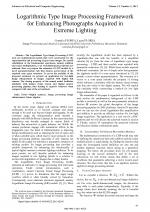| 2/2013 - 16 |
Logarithmic Type Image Processing Framework for Enhancing Photographs Acquired in Extreme LightingFLOREA, C. |
| Extra paper information in |
| Click to see author's profile in |
| Download PDF |
Author keywords
digital cameras, image processing image enhancement, linear algebra
References keywords
image(27), processing(24), logarithmic(13), florea(9), vision(7), model(7), enhancement(7), systems(5), signal(5), range(5)
Blue keywords are present in both the references section and the paper title.
About this article
Date of Publication: 2013-05-31
Volume 13, Issue 2, Year 2013, On page(s): 97 - 104
ISSN: 1582-7445, e-ISSN: 1844-7600
Digital Object Identifier: 10.4316/AECE.2013.02016
Web of Science Accession Number: 000322179400016
SCOPUS ID: 84878914251
Abstract
The Logarithmic Type Image Processing (LTIP) tools are mathematical models that were constructed for the representation and processing of gray tones images. By careful redefinition of the fundamental operations, namely addition and scalar multiplication, a set of mathematical properties are achieved. Here we propose the extension of LTIP models by a novel parameterization rule that ensures preservation of the required cone space structure. To prove the usability of the proposed extension we present an application for low-light image enhancement in images acquired with digital still camera. The closing property of the named model facilitates similarity with human visual system and digital camera processing pipeline, thus leading to superior behavior when compared with state of the art methods. |
| References | | | Cited By «-- Click to see who has cited this paper |
| [1] J. S. Lim, "Two Dimensional Signal and Image Processing", Upper Saddle River, Prentice Hall, New Jersey, US, 1990.
[2] M. Jourlin, J. C. Pinoli, "A model for logarithmic image processing", Journal of Microscopy, vol. 149, no. 1, pp. 21- 35, 1988. [CrossRef] [Web of Science Times Cited 116] [SCOPUS Times Cited 155] [3] V. Patrascu, I. Voicu, "An algebraical model for gray level images", in: Proceedings of the Exhibition on Optimization of Electrical and Electronic Equipment, OPTIM, Brasov, Romania, pp. 809 - 812, 2000. [4] C. Vertan, A. Oprea, C. Florea, L. Florea, "A pseudo-logarithmic framework for edge detection", in: J. B.-T.et al (Ed.), Advanced Concepts for Intelligent Vision Systems, Vol. 5259 of LNCS, Springer Verlag, pp. 637 - 644, 2008. [CrossRef] [SCOPUS Times Cited 34] [5] K. Panetta, E. Wharton, S. Agaian, "Human visual system-based image enhancement and logarithmic contrast measure", IEEE Transactions on Systems, Man, and Cybernetics - part B: Cybernetics, vol. 38, no. 1, pp. 174-188, 2008. [CrossRef] [Web of Science Times Cited 202] [SCOPUS Times Cited 277] [6] G. Deng, "A generalized logarithmic image processing model based on the Giga-vision sensor model", IEEE Transactions on Image Processing , vol. 21, no. 3, pp. 1406-1414, 2012. [CrossRef] [Web of Science Times Cited 17] [SCOPUS Times Cited 24] [7] C. Florea, C. Vertan, L. Florea, A. Sultana, "Non-linear parametric derivation of contour detectors for cellular images", in: Proceedings of IEEE International Symposium on Signals, Circuits and Systems, ISSCS, Vol. 2, IEEE, Iasi, Romania, 2009, pp. 1 - 4. [CrossRef] [SCOPUS Times Cited 3] [8] C. Florea, L. Florea, "A parametric non-linear algorithm for contrast based auto-focus", IEEE 7th International Conference on Intelligent Computer Communication and Processing, pp. 267 - 271, 2011. [CrossRef] [SCOPUS Times Cited 7] [9] A. V. Oppenheim, "Superposition in a class of non-linear system", Tech. rep., Research Laboratory of Electronics, M.I.T., Cambridge, U.S. 1965. [10] A. V. Oppenheim, "Generalized superposition", Information and Control, vol.11, no. 5,6, pp. 528 - 536, 1967. [11] J. Hefferon, "Linear Algebra", web edition, 2008, [Online] Available: Temporary on-line reference link removed - see the PDF document [12] M. Jourlin, J. C. Pinoli, "Logarithmic image processing", Acta Stereologica, vol. 6, pp. 651 - 656, 1987. [13] Q. Z. Wu, B. S. Jeng, "Background subtraction based on logarithmic intensities", Pattern Recognition Letters, vol. 23, no. 13, pp. 1529 - 1536, 2002. [CrossRef] [Web of Science Times Cited 30] [SCOPUS Times Cited 39] [14] M. Jourlin, J. C. Pinoli, "Image dynamic range enhancement and stabilization in the context of the logarithmic image processing model", Signal Processing, vol. 41, no. 2, pp. 225 - 237, 1995. [CrossRef] [Web of Science Times Cited 58] [SCOPUS Times Cited 68] [15] G. Deng, L. W. Cahill, G. R. Tobin, "A study of logarithmic image processing model and its application to image enhancement", IEEE Transactions on Image Processing, vol. 4, no. 4, pp. 506 - 512, 1995. [CrossRef] [Web of Science Times Cited 80] [SCOPUS Times Cited 105] [16] V. Patrascu, V. Buzuloiu, Color image enhancement in the framework of logarithmic models, in: Proceedings of the 8th IEEE International Conference on Telecommunications, Vol. 1, Bucharest, Romania, pp. 199- 204, 2001. [17] J. C. Pinoli, J. Debayle, Logarithmic adaptive neighborhood image processing (lanip): Introduction, connections to human brightness perception, and application issues, EURASIP Journal on Advances in Signal Processing, vol. 1, 2007 article ID 36105, [CrossRef] [Web of Science Times Cited 25] [SCOPUS Times Cited 37] [18] G. Deng, "An entropy interpretation of the logarithmic image processing model with application to contrast enhancement", IEEE Transactions on Image Processing, vol. 18, no. 5, 1135 - 1140, 2009. [CrossRef] [Web of Science Times Cited 55] [SCOPUS Times Cited 73] [19] C. Florea, C. Vertan, "Piecewise linear approximation of logaritmic image processing models for dynamic range enhancement", Scientific Bulletin of University Politehnica of Bucharest, vol. 71, no. 2 pp. 3 - 15, 2009. [20] K. Panetta, Y. Zhou, S. Agaian, E. Wharton, "Parameterized logarithmic framework for image enhancement", IEEE Transactions on Systems, Man, and Cybernetics - part B: Cybernetics, vol. 41 no. 2, pp. 460 - 472, 2011. [CrossRef] [Web of Science Times Cited 99] [SCOPUS Times Cited 131] [21] R. Ramanath, W. Snyder, Y. Yoo, M. Drew, "Color image processing pipeline: A general survey of digital still camera processing", IEEE Signal Processing Magazine, vol. 22 no. 1, pp. 34 - 43, 2005. [CrossRef] [Web of Science Times Cited 242] [SCOPUS Times Cited 312] [22] A. PH2.5-1960, "American standard method for determining speed of photographic negative materials (monochrome, continuous tone)", United States of America Standards Institute, 1960. [23] R. Jacobson, S. Ray, G. G. Attridge, N. Axford, "Manual of Photography: Photographic and Digital Imaging", Focal Press, Oxford ; Boston, MA, 2000. [24] J. Nakamura (Ed.), "Image sensors and signal processing for digital still cameras", Academic Division of T&F Informa, Taylor and Francis Group, Boca Raton, Florida, USA, 2006. [25] Y. C. Chang, J. F. Reid, "RGB calibration for color image analysis in machine vision", IEEE Transactions on Image Processing, vol. 5 no. 10, pp. 1414-1422, 1996. [CrossRef] [Web of Science Times Cited 87] [SCOPUS Times Cited 116] [26] P. Debevec, J. Malik, "Recovering high dynamic range radiance maps from photographs", in: ACM SIGGRAPH Proceedings of the 24th Annual Conference on Computer Graphics and Interactive Techniques, Los Angeles, US, pp. 369-378, 1997. [CrossRef] [SCOPUS Times Cited 242] [27] M. D. Grossberg, S. K. Nayar, "High dynamic range from multiple images: Which exposures to combine?", in: Proceedings of IEEE Workshop on Color and Photometric Methods in Computer Vision at ICCV, Nice, France, 2003. [28] S. Mann, R. Picard, "Being 'undigital' with digital cameras: Extending dynamic range by combining differently exposed pictures", in: Proceedings of IS&Ts 48th, Vol. 1, Washington D.C, US, pp. 422-428, 1995. [29] T. Mitsunaga, S. K. Nayar, "Radiometric self calibration", in: Proceedings of IEEE Conference on Computer Vision and Pattern Recognition, CVPR, Vol. 1, Ft. Collins, S.U.A, pp. 374-380, 1999. [30] F. Xiao, J. Pincenti, G. John, K. Johnson, "Camera motion and mobile imaging", in: Proceedings of the SPIE-IST Electronic-Imaging, Vol. 6502, 2007. [CrossRef] [Web of Science Times Cited 2] [SCOPUS Times Cited 8] [31] K. Sato, S. Ishizuka, A. Nikami, M. Sato, "Control techniques for optical image stabilizing system", IEEE Transactions on Consumer Electronics, vol. 39, no. 3, pp. 461 - 466, 1993. [CrossRef] [Web of Science Times Cited 78] [SCOPUS Times Cited 101] [32] F. Xiao, J. Pincenti, J. Farrell, "Camera motion and effective spatial resolution", in: Proceedings of International Congress of Imaging Science, Vol. 1, May, pp. 33-36, 2007. [33] S. Perstel, E. Pozniansky, O. Meitav, "Camera optimization techniques that take camera and scene motion into account", US Patent, 7546026, 2007. [34] C. Florea, F. Albu, C. Vertan, A. Drimbarean, "Logarithmic tools for in-camera image processing", in: Proceedings of 16th IET Irish Signals and Systems Conference, Galway, Ireland, pp. 394-399, 2008. [CrossRef] [SCOPUS Times Cited 13] [35] F. Albu, E. Steinberg, A. Drimbarean, C. Florea, A. Zamfir, P. Corcoran, V. Poenaru, "Image processing method and apparatus", US Patent, 20080219581, 2008. [36] M. Aguilar, W. Stiles, "Saturation of the rod mechanism of the retina at high levels of stimulation", Optica Acta, vol. 1 no. 11, pp. 59-65, 1954. [CrossRef] [SCOPUS Times Cited 158] [37] M. D. Grossberg, S. K. Nayar, "Modeling the space of camera response functions", IEEE Transactions on Pattern Analysis and Machine Inteligence, vol. 26, no.10, pp. 1272 -1282, 2004. [CrossRef] [Web of Science Times Cited 197] [SCOPUS Times Cited 257] [38] C. A. Poynton, "Rehabilitation of gamma", Proc. SPIE vol. 3299 no. 232, [CrossRef] [Web of Science Times Cited 57] [SCOPUS Times Cited 79] [39] J. Stevens, S. Stevens, "Brightness functions: Effects of adaptation", Journal of the Optical Society of America, vol. 53, pp. 375-385, 1963. [CrossRef] [SCOPUS Times Cited 338] [40] F. Dunn, M. Lankheet, and F. Rieke, "Light adaptation in cone vision involves switching between receptor and post-receptor sites", Nature, vol. 449, no. 7162, pp. 603-606, 2007. [CrossRef] [Web of Science Times Cited 157] [SCOPUS Times Cited 168] [41] D. Hubel, "Eye, Brain, and Vision", Scientific American Library, 1995 [42] S. J. Russell, P. Norvig, "Artificial intelligence: a modern approach", Upper Saddle River, New Jersey: Prentice Hall, 2003. [43] R. C. Gonzales, R. E. Woods, "Digital Image Processing", Addison Wesley, Reading, Massachusetts, US, 1992. [44] R. Ferzli, L. J. Karam, "A no-reference objective image sharpness metric based on the notion of just noticeable blur (JNB)", IEEE Transactions of Image Processing, vol. 19 no. 4, pp. 717 - 728, 2009. [CrossRef] [Web of Science Times Cited 596] [SCOPUS Times Cited 723] Web of Science® Citations for all references: 2,098 TCR SCOPUS® Citations for all references: 3,468 TCR Web of Science® Average Citations per reference: 47 ACR SCOPUS® Average Citations per reference: 77 ACR TCR = Total Citations for References / ACR = Average Citations per Reference We introduced in 2010 - for the first time in scientific publishing, the term "References Weight", as a quantitative indication of the quality ... Read more Citations for references updated on 2025-06-04 13:49 in 161 seconds. Note1: Web of Science® is a registered trademark of Clarivate Analytics. Note2: SCOPUS® is a registered trademark of Elsevier B.V. Disclaimer: All queries to the respective databases were made by using the DOI record of every reference (where available). Due to technical problems beyond our control, the information is not always accurate. Please use the CrossRef link to visit the respective publisher site. |
Faculty of Electrical Engineering and Computer Science
Stefan cel Mare University of Suceava, Romania
All rights reserved: Advances in Electrical and Computer Engineering is a registered trademark of the Stefan cel Mare University of Suceava. No part of this publication may be reproduced, stored in a retrieval system, photocopied, recorded or archived, without the written permission from the Editor. When authors submit their papers for publication, they agree that the copyright for their article be transferred to the Faculty of Electrical Engineering and Computer Science, Stefan cel Mare University of Suceava, Romania, if and only if the articles are accepted for publication. The copyright covers the exclusive rights to reproduce and distribute the article, including reprints and translations.
Permission for other use: The copyright owner's consent does not extend to copying for general distribution, for promotion, for creating new works, or for resale. Specific written permission must be obtained from the Editor for such copying. Direct linking to files hosted on this website is strictly prohibited.
Disclaimer: Whilst every effort is made by the publishers and editorial board to see that no inaccurate or misleading data, opinions or statements appear in this journal, they wish to make it clear that all information and opinions formulated in the articles, as well as linguistic accuracy, are the sole responsibility of the author.



